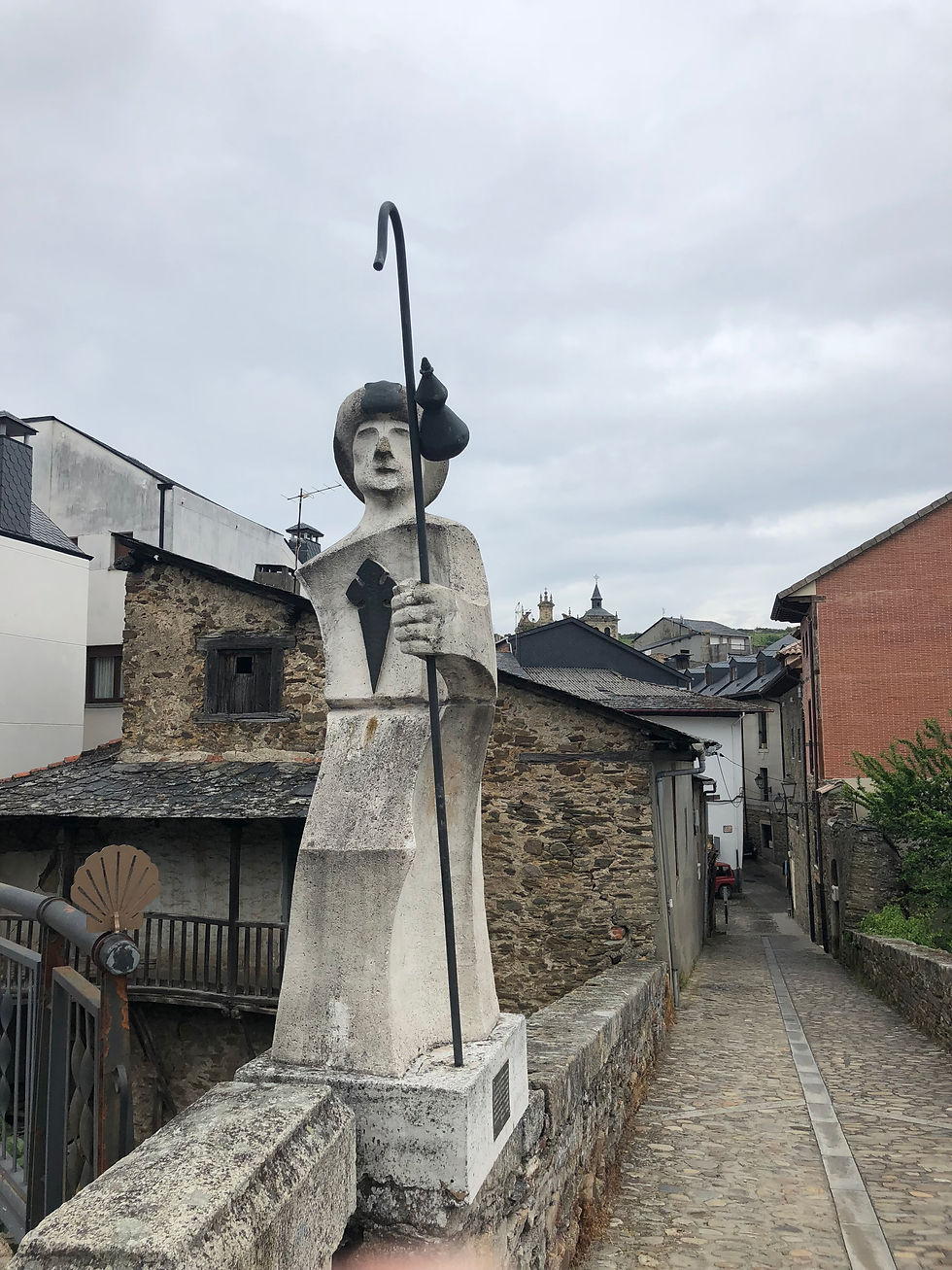El Bierzo
- Dad

- May 28, 2018
- 3 min read
El Bierzo is a unique territory in Castilla y Leon in that it is surrounded by mountains on all sides. Isolated in this way, the valley sits at almost 2,000’ elevation. Its history is primarily one of mining, viticulture, and The Way of St. James.
After being conquered by Emperor Augustus it became the largest mining center in the Roman Empire (primarily gold). The unique location also creates an excellent climate for growing fruit, especially grapes and cherries. The Romans imported grapevines and created a thriving wine country here. The primary varietal is Mencia. Grenache is also grown here, although used mostly in blends. The designations (and related regulations) of crianza, reserva, and gran reserva that we learned about in La Rioja apply to the Mencia wines here.
The valley reminds me of the Nagano region of Japan.
Our kind albergue host got espresso’s in us and pointed in the right direction out of Ponferrada. This included running out of his café shouting “Americano’s! It is this way!”, pointing the opposite direction we were walking. We walked through 8 km of industrial sprawl, not leaving the pavement until after 2nd breakfast in Camponaraya.
From there we were into the hilly vineyards of Bierzo under warm but cloudy skies. The mountains ahead were silhouetted and misty, not in a sinister way, but more a mysterious and exciting one. We summit those tomorrow. Unlike other times we’ve seen mountains in the distance, there aren’t any more after these for us. The next mountains beyond these, as far as I can tell on a Google Map, are the Appalachians.
Our bocadillo stop was in the charming town of Cacabelos, and then we were back into the Mencia vineyards and cherry orchards of El Bierzo.
Villafranca is billed as one of the most beautiful towns on the Camino. It is tucked into a notch in the foothills of the mountains, along the Rio Burbia. Ben took to it immediately, claiming it to be his favorite town of the journey. He said it was the fresh air and hills, and to that I would add peacefulness and history. The town got its start as rest stop for pilgrims on the Way of St. James prior to climbing the mountains (which is what we’re using it for tonight). I mentioned to Ben, when I saw the medieval bridge over Rio Burbia, that a solid bridge over a river along the Way seemed to be the key to building a successful town here.
Life got pretty rough for the townfolk of Villafranca after that. There was a plague in 1589, a flood in 1715, and things got even tougher in the more modern history of the Peninsular War in the 19th century. Headquarters of the Galician Army, it was sacked three times by England, then taken by France. Villafranca was freed in 1810.
Walking back across the bridge from our albergue into town for a visit, you’re struck by the four enormous medieval structures sitting in this tiny town: Iglesia de San Nicolas el Real, Convento de Padres Paules, Iglesia de San Francisco, and Iglesia de Santiago. After a long walk through town and back along the Rio Burbia, I agree that this is the most beautiful town on the Camino.
Like those before us we better use Villafranca for rest, tomorrow will be a challenge.
Buen Camino.


















Lots of pictures of castles, but none yet that match our sprawling estate outside of Sterling in Scotland! I ask only one question Mr. Jarv, can you say with certainty of any innkeeper on this journey that the carpet matches the curtains?
I will leave it to others to decipher...
What do you think came first, the La Cueva Cafe, or the Hard Rock Cafe? That wine press is huge, but then again so is that bridge. Beautiful pictures.
Amazing pics over the last two days. Funny - “Americano’s! It is this way!” could be a metaphor for our nation's last year and a half. You guys are approaching the one week to go mark, eh?